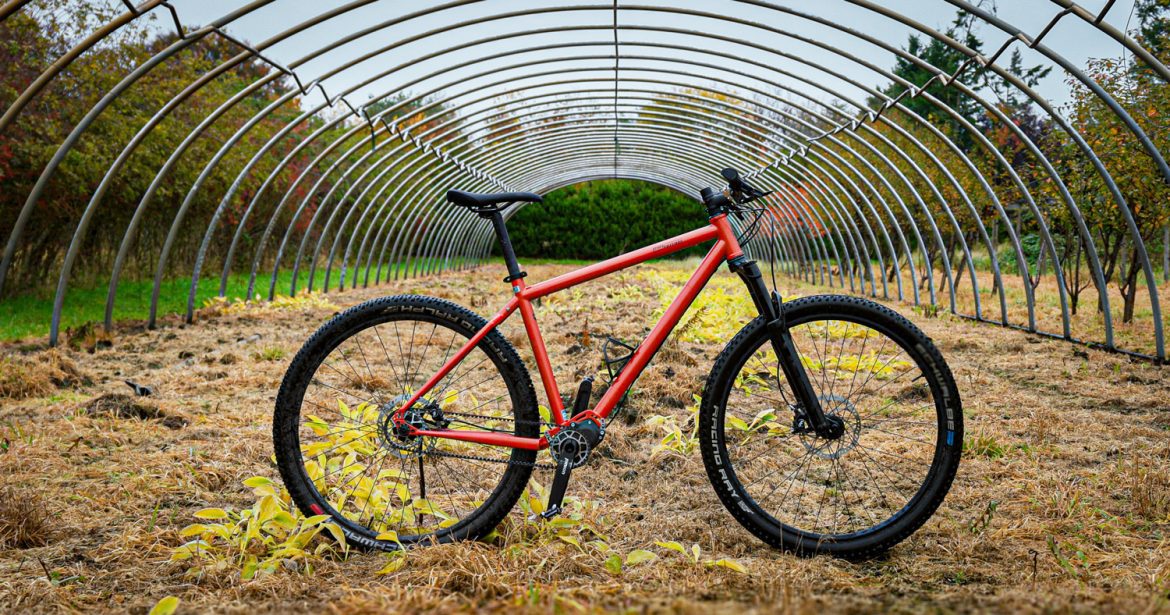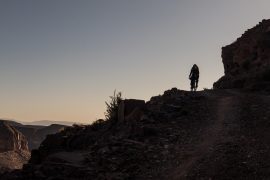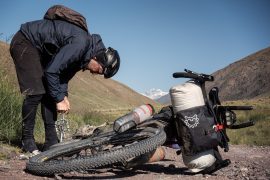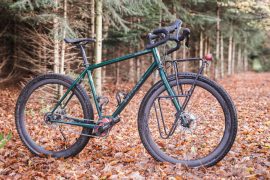Please Note:
At my request, the Tout Terrain Outback Xplore was made available to me for testing by Pressedienst Fahrrad. I would like to thank them for this. And that is also advertising.To stay fresh in the mind, you have to be curious and step out of your comfort zone every now and then, for example, to take a look at bikes that are not usually on your agenda. In the last few years, I have mainly tested gravel bikes, also because I am interested in the development of this trendy segment and the associated components. From time to time, however, I have also tested a drop bar mountain bike, such as the 8bar TFLSBERG or the Decathlon Riverside 920. This type of bike is currently being rediscovered. They have been around for a long time, but have been overshadowed by the focus on the classic gravel bike. Torsten Frank, among others, has now given the drop-bar MTB a well-deserved place in the public eye again.
For some time now, I’ve been looking at hardtail MTBs for Bikepacking and corresponding races. The reason is that these are increasingly becoming the more suitable means of choice at the Bikepacking events that interest me, and wide tyres, suspension and a somewhat more relaxed geo are finding more fans when it comes to off-road long-distance (and timed) riding.
But here, too, it’s good to take a step back, look at the bigger picture and get out of my race-influenced bubble. Bikepacking itself – like classic bike touring – is by no means performance-oriented or performance-optimised. It is – unsurprisingly of course – simply a great and relaxed way to discover the country and its people off the beaten track.
Often it is the classic touring bike with wider tyres that is used. Or the gravel bike, which basically has everything you need for a proper and fast touring bike. And sometimes it can also be a MTB. Like the Tout Terrain Outback Xplore 29 with Pinion gearbox and belt drive, which I now have for testing.
My experience with MTBs is not yet that extensive. I used to ride MTBs from time to time and of course have off-road experience. But I’m not a trail specialist and even though I like to thunder down descents off-road, an experienced MTB fan naturally pulls me off on trails and in bike handling. At races, for example, you can often see very well who’s from an MTB and who’s from a road bike. Bike handling and riding safety are often very different and mountain bikers have clear advantages.
A bit of training for more MTB riding technique can’t do any harm, as I’d like to take part in a long-distance bikepacking event with an MTB soon. That’s why I take every opportunity to get more involved with MTBs again and to ride them extensively. Because, as always, my principle applies here: knowledge instead of judgement, and for that you have to try it out for yourself.
The Tout Terrain Outback Xplore 29
Tout Terrain is a well-known manufacturer of fine steel bicycles. I have already been able to test two bikes from them. Under the name X.Over, they have been offering a small selection of gravel and mountain bikes for a few years now, which are deliberately designed for off-road use. I have already tested the Vasco GT28 from this segment.
And now the Outback Xplore. According to Tout Terrain, these models are designed as bikes “for endurance athletes and trail junkies” and are only available with Pinion gears.
The Outback Xplore is available as a 275 version with rigid fork (carbon) and 27.5 inch/650B wheels. It is also designed more as a touring bike for rough terrain, with front and rear racks. The Xplore 29 is equipped with a suspension fork and 29 inch wheels and is aimed more at use as a classic hardtail and Bikepacking MTB.
To say it right away: I am not a fan of Pinion and belt drive. I was able to test Pinion years ago, and I also had some experience with the belt drive on my Norwid touring bike. But here, too, the rule is: always look out of the valley of prejudice (and in this case bad experiences) and give yourself the opportunity to gather new impressions.
Frame & Fork Outback Xplore 29
I rode the Xplore 29 for about 300 km in the test. And I have to say that it is a pleasant mixture of agile mountain bike and comfortable bikepacking machine. This is partly due to the geometry and partly to the suspension fork. If you’re more from a gravel bike or – as in my case drop bar MTB – and suspension is rather not built in, then this is like a revelation. I have never ridden over rough stones, washed-out rain gutters on gravel paths and root trails so smoothly and, above all, so gently on my joints. Of course, the full power of the suspension comes into its own downhill, where I was able to hurtle down much more comfortably and quickly. No wonder, because the Cane Creek Helmet MKII installed on the Xplore has 130mm of travel, which is more than enough for use in normal XC terrain. More about the fork later.
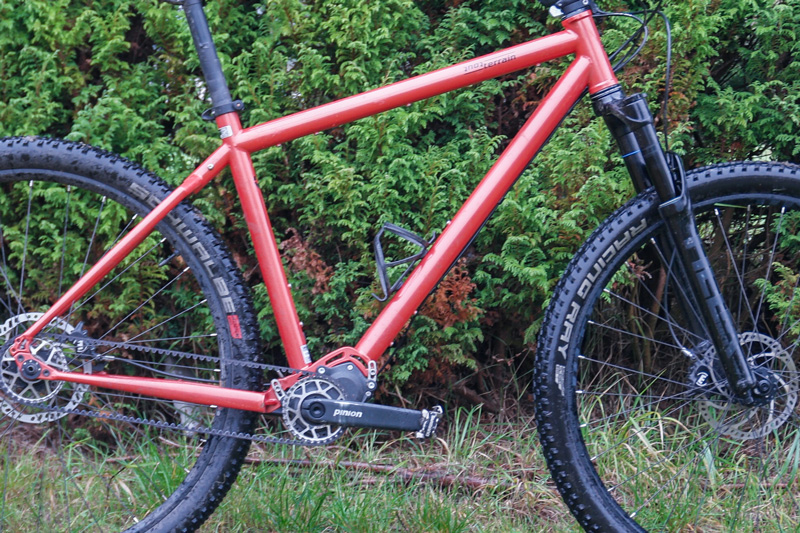
The frame is made of Stratocrom. This is a chrome-molybdenum steel (CrMo 4130), “…which is one to two times butted (end reinforced).”
It is very well made and stable. I have ridden steel frames that were rather “soft”. That is not the case here: the power transmission is very direct and pleasantly agile. To be honest, the frame rides similarly to my Salsa Fargo titanium frame.
At the centre of the Xplore frame is, of course, the Pinion gearbox. It is held in the Tout Terrain TBA, a pivoting gear bridge that functions like an eccentric with special capabilities. According to Tout Terrain, this design ensures that the gearbox can move/swivel and thus always maintain belt tension.
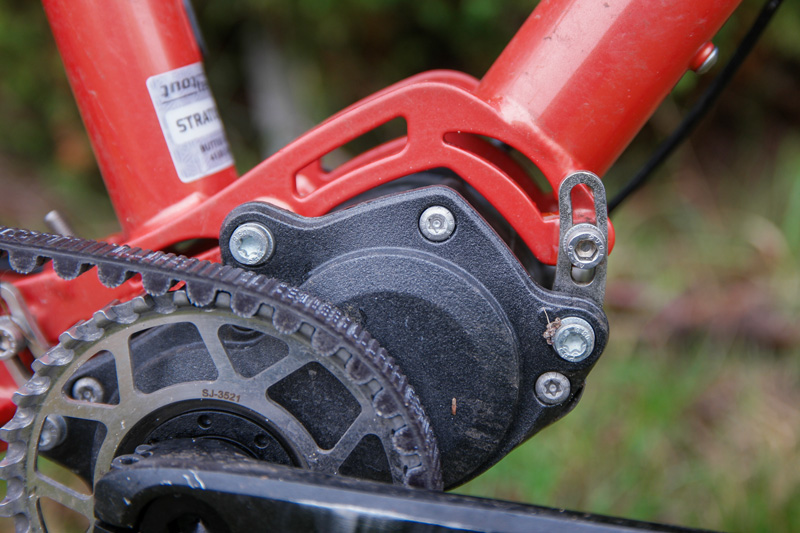
“Through a simple mechanism, the gearbox is rotated around its central suspension screw. The TBA profiles oscillate with it and thus the chain or belt is re-tensioned.”
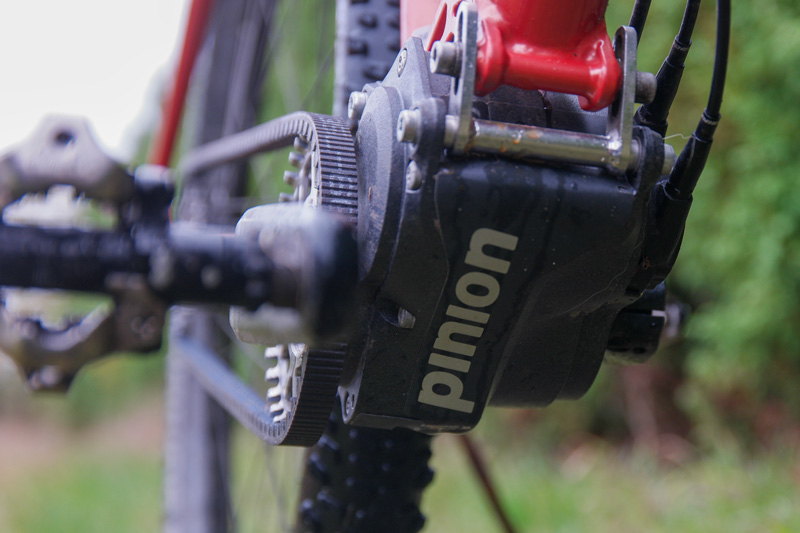
Another advantage is that this makes it easy to install or remove the rear wheel and it also does not change its position. This is what happens when you adjust the tension of the chain or belt via the rear dropout. I have this for the Rohloff on the Norwid touring bike and it is anything but optimal and practical.
“The wheel installation and removal is quite similar to that of a traditional rear wheel. The mudguards always have the same distance to the tyre, because the position of the tyre in relation to the mudguard does not change. Wheel misalignment is not possible because the dropouts always remain in the same position.”
In terms of geometry, it is a normal MTB, with a steering angle of 68 degrees and a stack to reach ratio of 1.46 in frame size L, which is standard nowadays. To be able to assess this better: from a StR ration of 1.55, you sit very upright and comfortably. The lower the value, the more sporty/stretched you sit.
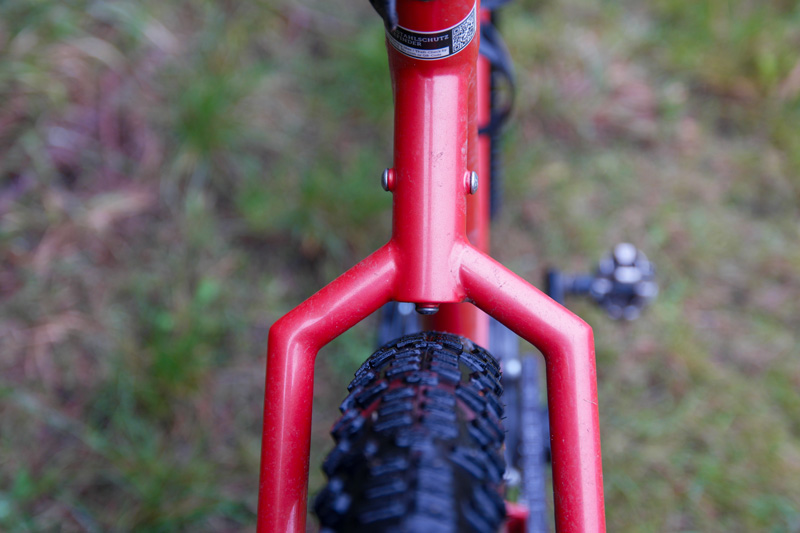
In comparison: the Canyon Exceed Hardtail has a StR ratio of 1.39. The Orbea Alma of 1.39. So you can say that the Xplore 29 is quite comfortable for an MTB, but still sporty enough.
You can spend a long time on the bike and, depending on your mood, cruise through the countryside at a faster or more leisurely pace.
Of course, the frame is also well prepared for extended tours as far as the mounting points are concerned. Four bottle cages can be attached. And it has a system weight of 130kg, which is sufficient for now. However, heavier people will reach the limits here, too. Other manufacturers, such as Bombtrack with their Beyond+, show that steel-framed MTBs can be made differently and offer a system weight of 165kg.
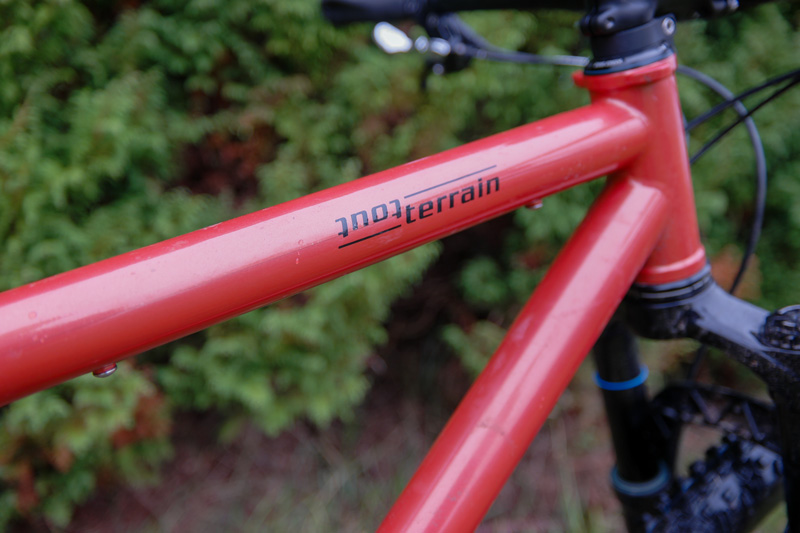
Depending on your preferences, you can fit 27.5″ x 3.0″ or 29″ x 2.25″ wheels in the frame. I would have preferred at least 2.4″ for a 29er wheel size, but 2.25″ is ok for the purpose of the bike, bikepacking tours and occasionally shredding in the forest.
But the fork can take a little more: either you select the Tout Terrain Adventure Fork II rigid fork made of carbon in the configurator, which can take up to 3 inches. Or the above-mentioned Helm MK II suspension fork, which can take tyres up to 2.5 inches wide.
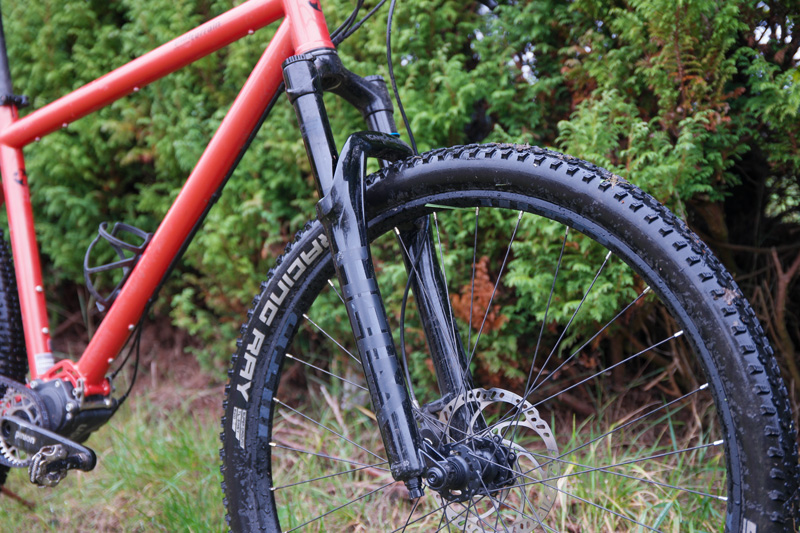
However, this suspension fork is such a thing, because in my view it is not the right choice for a bike that is designed for touring. Because in my view, you need a fork that has a lock-out for that. This allows you to switch off the suspension, which is an advantage on stretches of road where suspension is simply not needed and would otherwise cost a lot of energy. And these passages are very common, where you come out of the terrain and ride first on the road or light gravel paths and want to make kilometres. Suspension is simply a nuisance and robs you of energy.
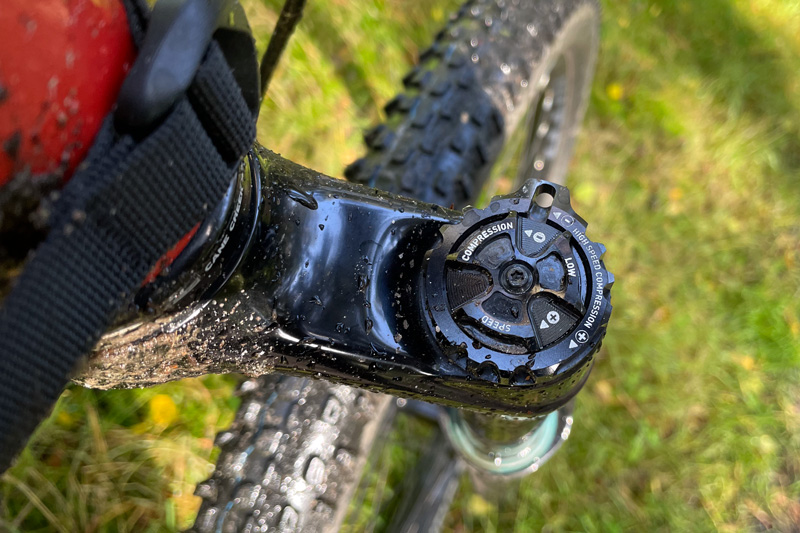
I can’t understand Tout Terrain’s decision in favour of the Helm MK 2. I would swap this fork for a suspension fork with lock-out. Then it would be a different story.
And whether you need the 130mm of the Helm MK II is up to you. I personally find 100/110mm sufficient for classic XC Bikepacking use.
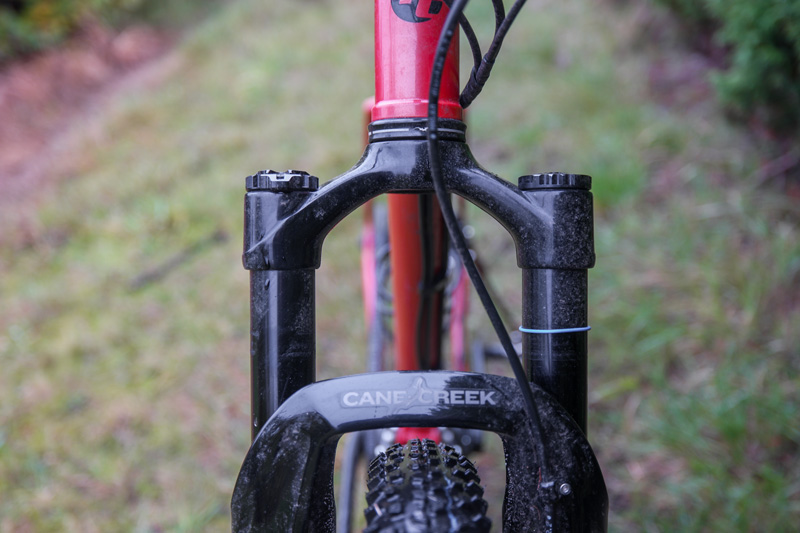
Bikepacker and bike traveller Tristan Ridley has been riding the Tout Terrain Outback Xplore 29 for a long time and has impressive tours. He made a great video about the bike and also addresses the subject of suspension forks. That’s why he doesn’t ride the Cane Creek Helm MKII, but a Fox 34 Float Factory SC with 100mm travel and Lock-Out.
The fork has Boost Standard with 15x110mm. The frame also has Boost in the rear with 15×148.
Drivetrain: Pinion C 1.12
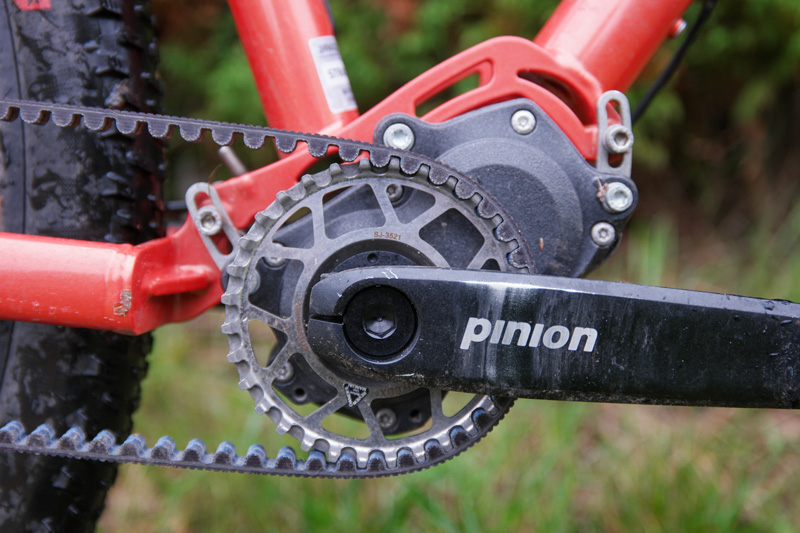
One of the first reactions I got to the bike was the question whether 12 gears would be enough and whether it wouldn’t be better to have a P 1.18 Pinion. I can reassure you, because in my opinion the 18-speed Pinion is something for touring and trekking bikes. On a mountain bike designed for Bikepacking, the 12 gears are completely sufficient, because they offer a total gear ratio of 600% (the P 1.18 636%) and have enough leeway upwards and downwards to either make good kilometres or to be able to cope with luggage in the mountains and on climbs.
In comparison, a 1×12 SRAM Eagle has 500% and a Rohloff 525% total gear ratio.
Pinion positions the C 1.12 as: “Manual transmission for everyday, leisure and touring riders”. This also makes the positioning of the Outback Xplore 29 a little clearer.
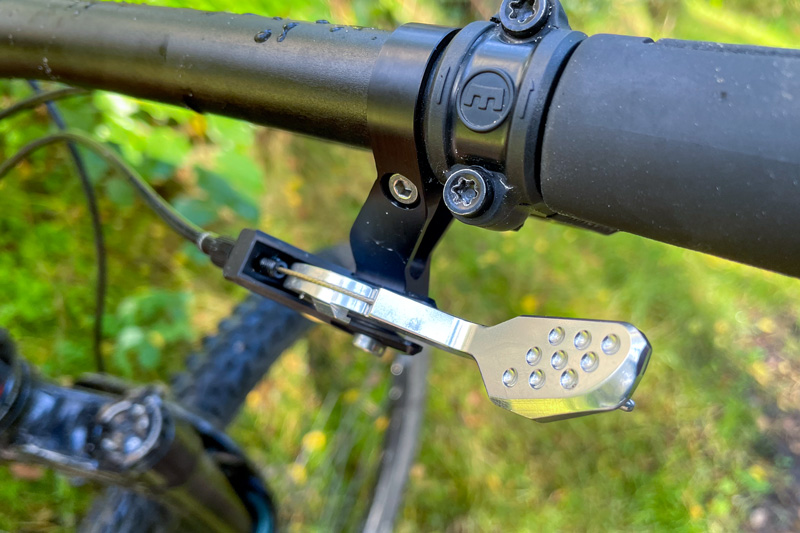
The Pinion has an advantage in terms of low maintenance in addition to the gear ratio range. However, it reaches its limits when performance is required. You can’t shift under load, which is annoying on climbs. The Outback has Pinion thumb shifters and no twist shifters. This is quite comfortable and you shift down on the right (into the lightest gear) and up on the left (into the heavier gears). However, on my test kilometres it was sometimes a bit clumsy and difficult to shift. But I am also used to the SRAM AXS and expect precise shifting, even under load.
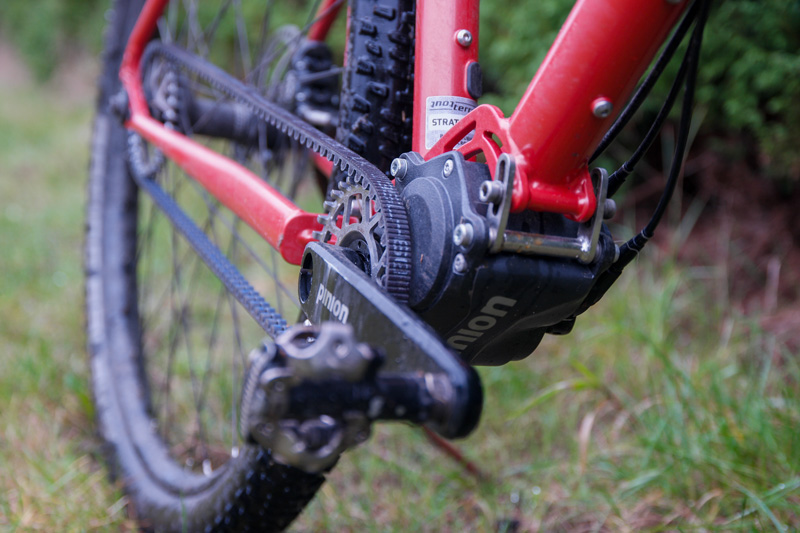
And then we also have to talk about the weight: the gearbox sits low on the wheel and therefore doesn’t weigh that much when riding. But the 2.1 kg are noticeable and are more than a kilo compared to a SRAM Eagle drive train.
Speaking of derailleurs: a Pinion is also a closed system, which of course has its advantages. But in the event of a breakdown, it’s also difficult to get spare parts. Especially when you’re on the road, that’s the end of the line, and in regions without a direct Pinion replacement, there’s no other way to get around. Also because the frame does not allow an alternative drive system.
Drivetrain: Belt
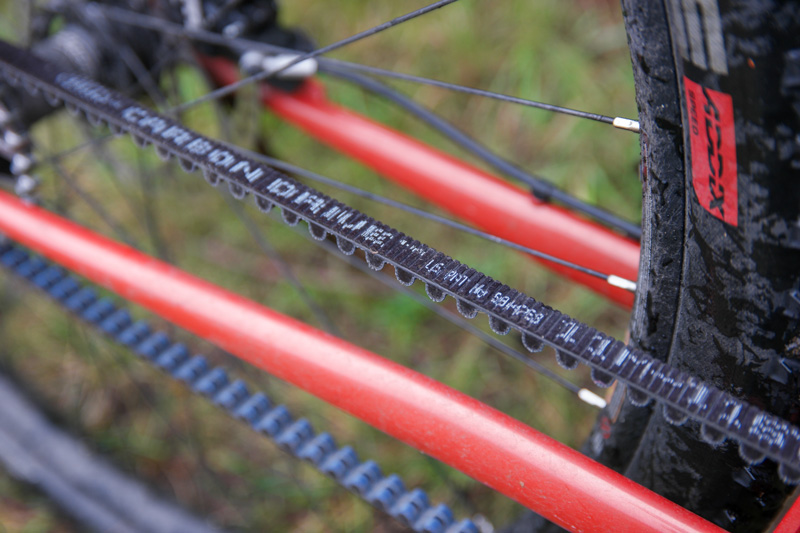
A Gates Carbon Drive belt is used on the Outback Xplore. I understand the approach behind it, to offer a system that requires as little maintenance as possible. The interplay with the Pinion works perfectly.
However, I personally consider the belt to be of limited use as a drive system on mountain bikes and performance-oriented bikes. It is certainly great for city bikes and trekking bikes. Perhaps also for touring bikes. Unfortunately, my experiences are negative. I have a belt drive in combination with a Rohloff on a Norwid touring bike. Unfortunately, the belt broke after only 4,500 km. One of the reasons was that a stick got into the belt and destroyed the structure. This is something that can often happen in the forest or on trails, which is what the Outback is meant for.
In addition, the bottom bracket and the sprocket were completely ruined, which is strange regardless of the stick incident. I didn’t take too much care of the belt, partly because one of Gates’ performance promises was that the belt would be low-maintenance.
A new belt cost 90 euros. It lasted about 8,000 km before it was defective again and the teeth fell out. And again, the sprocket and pinion were worn out. The bike was mainly used for normal city riding, as it is now my eldest son’s school bike.
And if the belt breaks on tour, you can take a replacement with you, but the belt must not be kinked or otherwise folded, because that destroys the structure. As a result, it takes some space to carry a replacement belt. And this sensitivity of the belt structure is especially relevant when the bike is sometimes transported differently. On my cycling trips around the world, my bike has often been transported on the roofs of various vehicles or in boats and canoes. Damage simply cannot be completely ruled out.
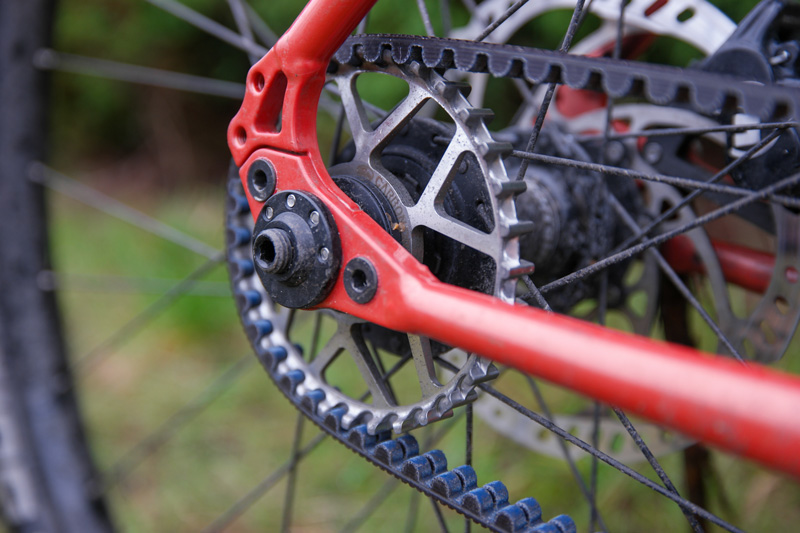
In short: from my point of view, this is simply not suitable for Bikepacking tours. Even though mounting the rear wheel on the Tout Terrain is much easier than on my Norwid.
But don’t worry: Tout Terrain also offers the Outback Xplore in the configurator with a chain instead of a belt.
BUT:
On the other hand, belts have proven themselves in practice and there are many good examples where, for example, touring cyclists have travelled very far with very little maintenance and problems thanks to belts. I would definitely give the belt another chance on a good touring bike. Together with a Rohloff. My experience is based on use on the Norwid Gotland, where the drivetrain was retrofitted. However, I believe that the frame was not really suitable for it at the time and the combination of belt and Rohloff was simply not optimal here.
So if you are interested in the Outback Xplore 29, don’t just be guided by my experiences, but also look at what other people have experienced with belts. I would like to refer you to Kamran, who rode around the world with his bike and belt drive.
Sieh dir diesen Beitrag auf Instagram an
Drivetrain: Efficiency-killer combination Pinion and belts
And then I have to bring out my old and most commented article about the efficiency of chain vs. belt:
In this I spoke to two experts and got the following conclusion:
“The question of bicycle drive efficiency is of a complex nature: the chain drive in combination with derailleur gears is the ideal bicycle drive in this respect because it combines the power transmission from the bottom bracket shaft to the rear wheel with the function of a manual gearbox. There is therefore only one loss-maker.
Although hub gears in themselves are gearboxes with excellent efficiency, they must always be combined with a “traction drive” (generic term for chain, flat belt, toothed belt, V-belt, poly-V-belt, etc.) that transmits the power from the bottom bracket shaft to the rear wheel, resulting in a system of two loss generators. Due to this system-related disadvantage, drives with hub gears generally have a lower efficiency than those with derailleur gears.
This system-related disadvantage becomes even more obvious when the bicycle chain is replaced by a toothed belt drive. Measurements have shown beyond doubt that the losses of a toothed belt drive are significantly greater than those of a chain drive. (…)”
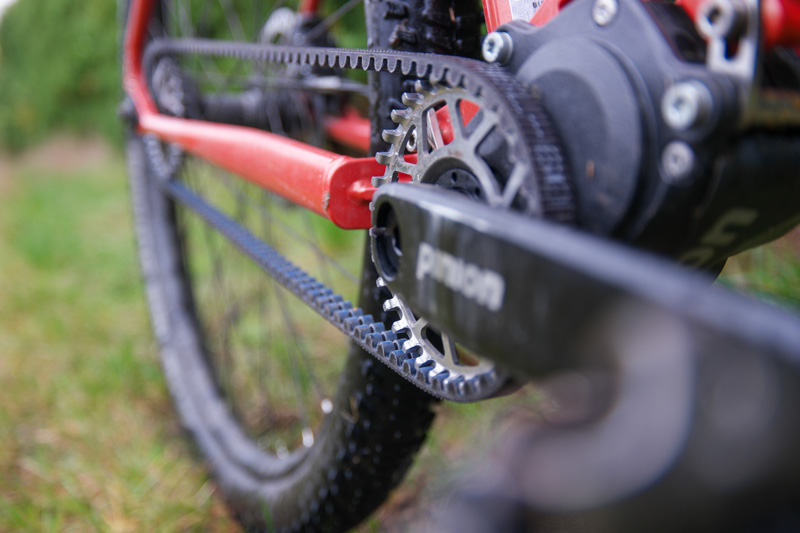
Of course, when I ride the Outback Xplore, I also notice that it’s a bit heavier than what I’m used to with my chain drive. In practice, however, this is not particularly noticeable and I take it as good training. However, the data show me the difference: I’m also 3-4 km/h slower on my training lap with the Outback. This may be due to the suspension fork, which absorbs a lot of energy. But also the belt/Pinion drive.
The Outback Xplore in the configurator
Tout Terrain offers a whole host of customisation options for the Outback Xplore. In the configurator you can choose between X.Over Pure and X.Over Plus. Pure is the Pinion combined with a chain drive. The Plus version has a belt drive.
As for the colours, you can choose anything your RAL heart desires. Costs extra, but the basic colours Atlantico Metallic, British Racing Green Metallic and Black are not bad either.
Since the Outback Xplore also comes with everything you need to mount mudguards and luggage racks, you can also pre-select lighting options, rear and front racks and bottle cages in the configurator.
For the handlebars, you can choose between the Tout Terrain Ergo Sport in a width of 760mm or a Jones Bar. For the grips, you can choose between the in-house screw grips or a Brooks model. The Ergo-Stop 2 steering stop, which I find quite good, cannot be deselected, but is also useful.
The stem is standard 70mm long with an angle of +/- 6 degrees. Longer ones are selectable. The headset is the Cane Creek 40. It’s cheap, but also good. However, I would like to see a selection of higher quality headsets.
The configurator for the drivetrain is interesting: Tout Terrain offers the option of upgrading from the C 1.12 to the P 1.18. This costs 500 euros more, but it is good value. This costs 500 euros more, but is an option for all those who are afraid they won’t get by with 12 gears. But it also means more weight.
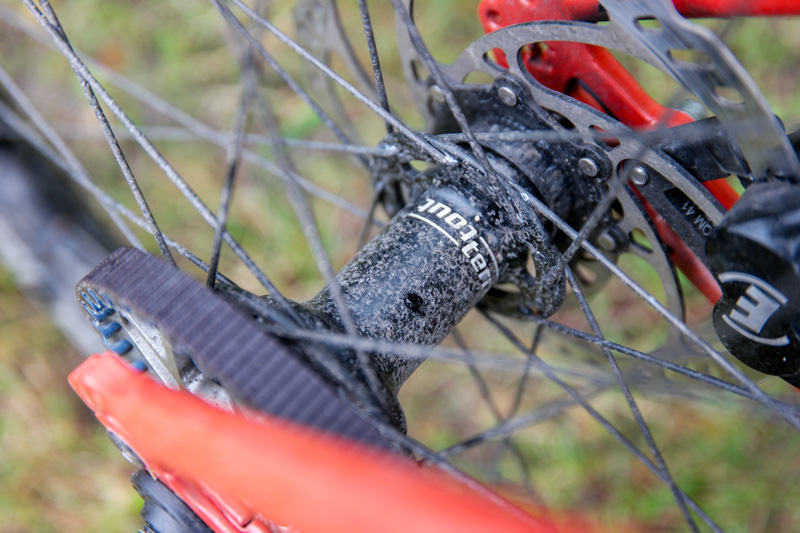
From my point of view, this would only be an option if you want to build the Outback Xplore as a monster touring bike, perhaps choosing the carbon rigid fork instead of the Cane Creek Helm MK II suspension fork (+595 euros) and thus configuring an off-road touring bike.
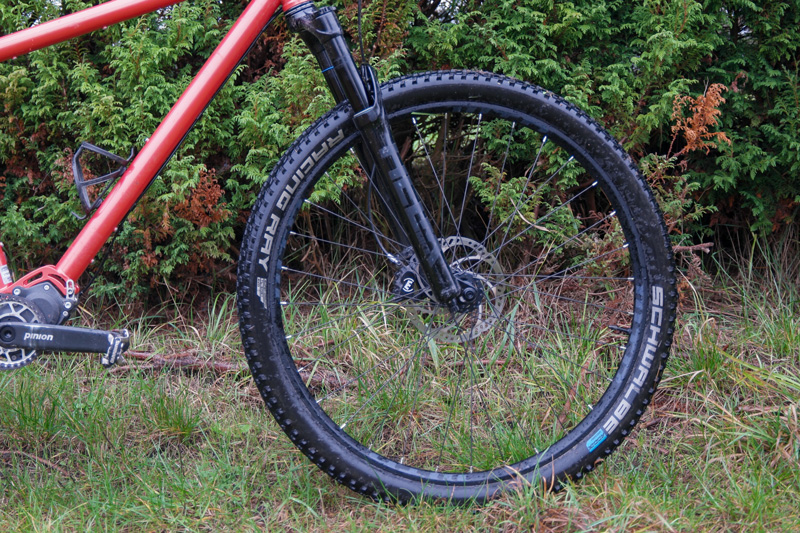
If you want a USB power supply via hub dynamo, then according to the configurator this is only possible in conjunction with the Adventure Fork II rigid fork.
Unfortunately, there is little room for manoeuvre with the wheels. Tout Terrain’s own Black Label hubs are used, about which there is little information. For the rims, WTB KOM rims with a jaw width of 25mm are used. This is sufficient for the Outback Xplore’s maximum tyre width of 2.25″.
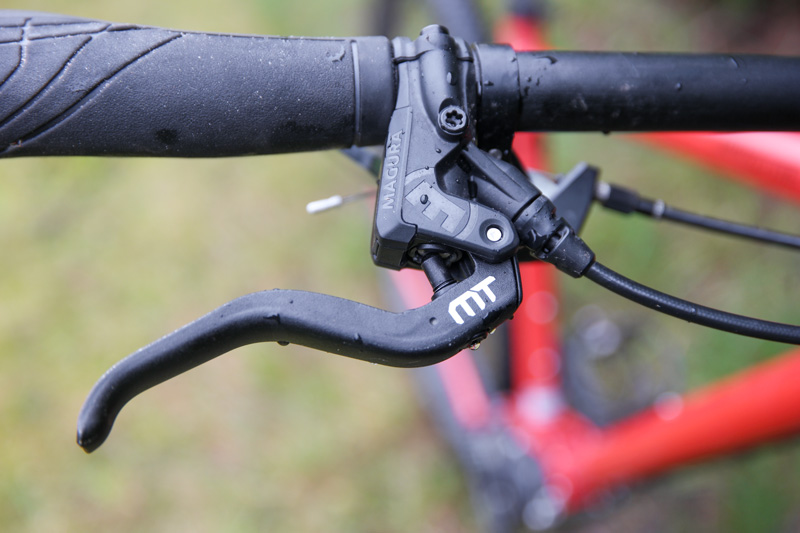
The brakes on the test bike are Magura MT5 four-piston brakes, which work very well. However, I don’t like their plastic look and feel and would prefer Shimano XT four-piston brakes.
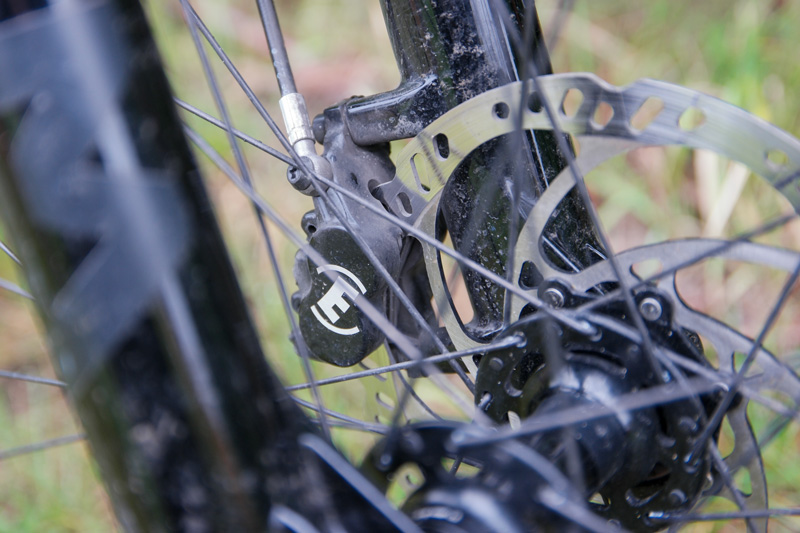
And for all those who also want to set an example for the environment when buying a bicycle, Tout Terrain offers a CO2 compensation in the amount of 50 euros. Tout Terrain then doubles this contribution, which goes to Atmosfair, which then uses it to support specific climate projects.
Good idea, great initiative, but somehow it’s a double burden for all those who are already making a climate statement with a bicycle, or who – like Tout Terrain – are already doing a lot in their production and business processes to be climate-friendly to neutral.
Actually, you should be able to participate in the CO2 certificate trading programme with a bicycle, just like I do with my electric car. There, many e-cars with their CO2 savings are combined and sold as certificates to CO2-intensive industries. So there’s some money in it for the car owners. And that should also be available for the bicycle. Just as an idea…
Conclusion Tout Terrain Outback Xplore 29
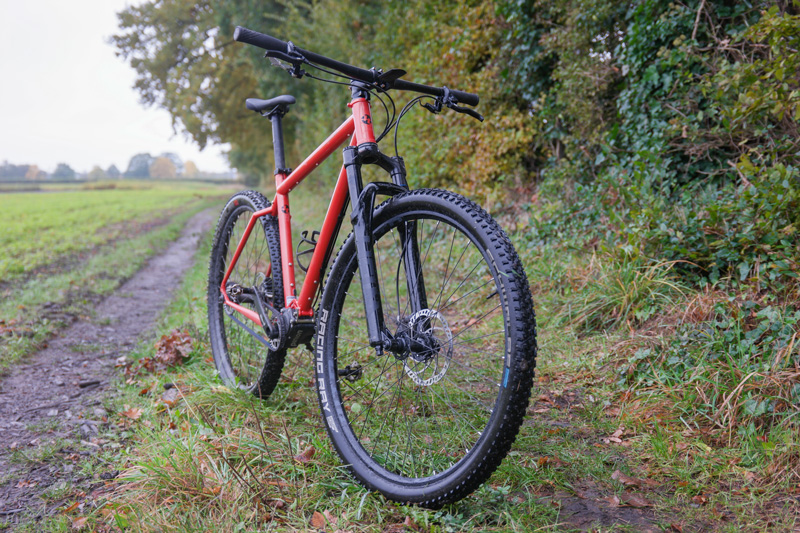
I already wrote it above: the Outback Xplore is pleasant to ride, naturally feels comfortable off-road, is really fun when it gets bumpy thanks to the suspension fork and is very well suited for a bikepacking tour off-road. This is also ensured by the corresponding geometry, which is designed more for touring.
In my opinion, it is more for those who value experience over results and who plan to ride for longer periods of time and want to have better comfort in the geometry and when riding. It is not a lively trail machine. You can certainly ride it that way, but there are other bikes for that.
It’s great as a “monster touring bike” on an MTB basis, with which you can go Bikepacking or cycle touring in Africa or Iceland or Patagonia or even in this country off the beaten track.
But if you choose the Outback Xplore, you choose a closed system: similar to smartphones, with the Pinion you are in a proprietary system that doesn’t leave many options, but works well in itself. And it has its limitations if something breaks.
In return, you get freedom from maintenance and, with the Pinion C 1.12, a drive that is completely adequate and leaves plenty of room for fast riding and steep climbing. And if that’s not enough, you can take the P 1.18 and turn the Outback Xplore into a touring MTB. To be honest, the optional Jones Bar fits the concept quite well here.
However, there is freedom of choice in the configurator and you can, for example, select the chain or belt as the drive. Or the carbon rigid fork instead of the Cane Creek suspension fork.
For 2,500 euros, however, you only get the frameset with gearbox in the configurator and can build the rest yourself.
Unfortunately, the rear tyre width is limited to 2.25 inches. I would have preferred at least 2.4 inches to be able to react better to different requirements with the tyre width. Besides, this is standard on most hardtails. At the front, however, there is enough space – most of all if you choose the Carbon Cinq Adventure Fork II.
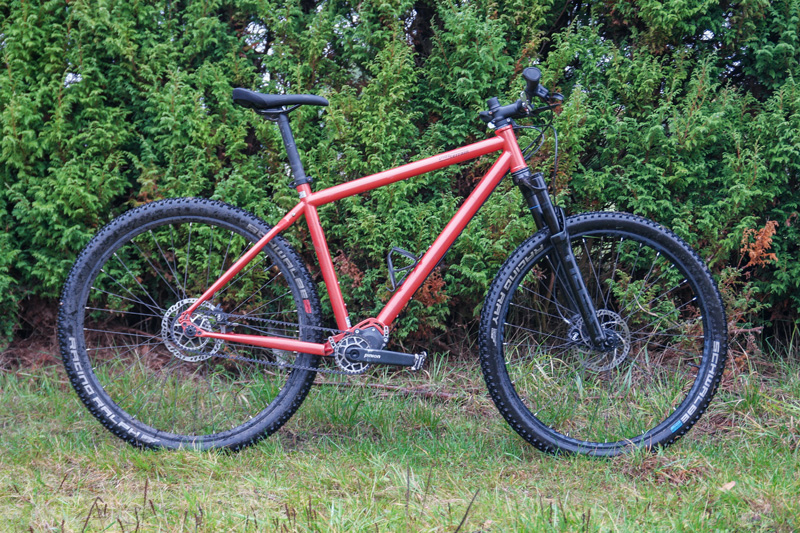
Tout Terrain is known for excellent frame construction with a lot of experience. Some of the best touring bikes come from this manufacture and steel is the material of choice here. They are, as far as that goes, carefree bikes where you don’t have to worry about durability.
Of course, this weighs a lot, especially since the Pinion C 1.12 alone weighs more than 2 kg. Overall, the weight of the test bike was 15.1 kg (including pedals).
With my configuration, which was basically the same as the test bike, the price is 4,990 euros.
Here you can find all technical details of the Outback Xplore.
Outback Xplore: further test reports
To give you a broader picture of the Tout Terrain Outback Xplore, you can find more test reports here:
- Tristan Ridley about the Outback Xplore
- MTB News about the Outback Xplore
- Bikepacking.com über das Rad

